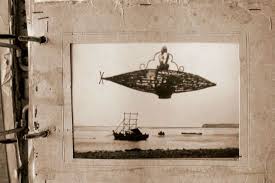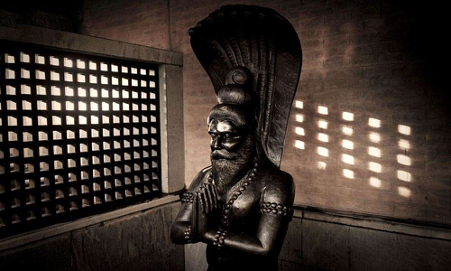
The Great Indian Engineer..
Shivkar Bapuji Talpade(1864–1916)
Most of us might be wondering who is this gentleman?
So let me tell you, this man, Shri Talpade, constructed the FIRST UNMANNED AIRCRAFT in 1895, 8 yrs before Wright Brothers. Yes, you read it absolutely right!

Shivkar Bapuji Talpade(1864–1916)
Most of us might be wondering who is this gentleman?
So let me tell you, this man, Shri Talpade, constructed the FIRST UNMANNED AIRCRAFT in 1895, 8 yrs before Wright Brothers. Yes, you read it absolutely right!


Shivkar Bāpuji Talpade was a technical instructor in the art & craft dept. of Sir JJ School of Art where he studied Sanskrit literature & the Vedas.
Based upon the ancient texts, he constructed the first unmanned aircraft (in the contemporary world, as ancient India had planes)
Based upon the ancient texts, he constructed the first unmanned aircraft (in the contemporary world, as ancient India had planes)
He learned about ancient Indian aeronautics through his teacher Chiranjilal Verma.
Shri Verma led him to read Dayanand Saraswati's works related to ancient aeronautics, such as ‘Rigvedādic Bhāshya Bhumikā’ & ‘Rigved & Yajurveda Bhāshya’ & Maharishi Bharadwaja's Vimana Shastra.
Shri Verma led him to read Dayanand Saraswati's works related to ancient aeronautics, such as ‘Rigvedādic Bhāshya Bhumikā’ & ‘Rigved & Yajurveda Bhāshya’ & Maharishi Bharadwaja's Vimana Shastra.
Talpade's aircraft was named Marutsakhā, derived from the Sanskrit Marut('air' or 'stream') & sakhā('friend') which together mean 'Friend of wind'
Marutsakhā took off in front of a crowd of 1000s to a hght of 1500 feet & sustained flight for a few minutes, more than WB's model.
Marutsakhā took off in front of a crowd of 1000s to a hght of 1500 feet & sustained flight for a few minutes, more than WB's model.
The pathbreaking experiment didn’t find a place in any news except in Marathi newspaper Kesari & remained largely unexposed to the masses.
The question is why?
If Talpade flew a flight earlier than WBs why is he not credited for this?
The question is why?
If Talpade flew a flight earlier than WBs why is he not credited for this?
It is extremely disheartening to see one genius not given due respect by society.
Why?
Because he is an Indian? Or that recognizing him would eventually lead to recognizing ancient Indian sciences, which they do not want?
Surely, "The Glory of Ancient India" scares them! :)
Why?
Because he is an Indian? Or that recognizing him would eventually lead to recognizing ancient Indian sciences, which they do not want?
Surely, "The Glory of Ancient India" scares them! :)
• • •
Missing some Tweet in this thread? You can try to
force a refresh







